1. Blackboard Live Classroom
2. Student Created Content
2.1. Glogster
3. Collaboration
3.1. Learning theory
3.1.1. Cooperative learning
3.1.2. Social learning
3.1.3. Social constructivism
3.1.3.1. Community Education
3.1.3.2. Constructionism
3.1.4. Family based models of learning
3.1.5. Gagnes stages of learning
3.1.6. Adult education and activism
3.2. Wiki
3.3. Google documents
3.4. Mindmeister
3.5. SkyDrive/DropBox
3.6. Padlet
4. Best Practice
4.1. Blended learning
4.2. Appropiate technology
4.3. Learning Activities vs Teaching
4.4. Keep It Simple Stupid (KISS) Approach
4.5. Technology for PBL
4.6. Active learning that includes cycles of reflection
5. CMC
5.1. Synchronous Vs Asynchronous
5.2. Email (Asynchronous)
5.3. Forums (asynchronous)
5.4. Chatroom
5.4.1. Rapid
5.4.2. More than two participants?
5.5. Live classroom
6. Create resources
6.1. Rapid elearning
6.1.1. Readily available tools
6.1.2. Microsopft PowerPoint
6.1.3. Screenr
6.1.4. prezi
6.2. Audio resources
6.2.1. Audacity
6.2.1.1. Levelator
6.2.2. Audioboo
6.2.3. Croak.it
6.3. Video resources
6.3.1. Screencasting
6.3.2. Live video
6.3.2.1. Bloggies
6.3.2.2. Windows Moviemaker
6.3.2.3. Apple iMovie
6.3.2.4. magisto
6.3.3. Animation?
6.3.3.1. Animoto
6.3.3.2. xtranormal
6.3.3.3. imotion
6.3.3.4. Voki
6.3.4. mainstream media
6.4. Example
6.5. Additional Resources
6.5.1. Microsoft Partners in Learning
7. Locate resources
7.1. Locate
7.1.1. Open web
7.1.1.1. Youtube
7.1.1.1.1. TED
7.1.1.1.2. Khan Academy
7.1.1.2. Wikipedia
7.1.1.3. Google books
7.1.1.4. Open Access Journals
7.1.2. Google search
7.1.2.1. Advanced search
7.1.2.2. Google Scholar
7.1.3. Closed resources
7.1.3.1. Institution library
7.1.3.2. Academic publishers
7.1.3.3. Repositories - NDLR
7.2. Evaluate
7.2.1. Credibility
7.2.2. Authority
7.2.3. Accessibility
7.3. Intellectual property
7.3.1. Copyright
7.3.2. Plagiarism
8. Professional Networking
8.1. LinkedIN etc
8.2. Attending conferences virtually or in person
8.3. networking with my own colleagues
8.4. EdTech, ICT Edu
9. Classroom
9.1. Data Projector
9.1.1. PowerPoint
9.1.2. Prezi
9.1.3. Google docs
9.1.4. YouTube clips
9.2. Interactive Whiteboard
9.2.1. Integrate web materials into classroom display
9.2.2. Smooth navigation from board
9.2.3. Add and annotate
9.3. Learner Response systems
9.3.1. Classroom quizzes
9.3.2. Check for understanding
9.3.3. Formative assessment
9.3.4. Critical thinking
9.4. Peerwise
9.5. Document camera/visualiser
10. History
10.1. Slate and chalk, Blackboard, whiteboard, etc
10.2. Moodle
10.3. Printing - text books
10.4. Photography, film
10.5. Copiers - spirit copiers, gestetner, photocopy
10.6. Radio/TV (University of the Air!)
10.7. Video recording
10.8. Computers (CBT)/Multimedia
10.9. Internet/WWW
10.10. pencil and copybook
11. Introduction
11.1. Sceptic or enthusiast?
11.1.1. or somewhere in the middle?
11.2. Favourite/best technologies
11.3. No significant difference
11.4. Digital Exclusion
11.4.1. digital native
11.4.2. digital immigrant
11.4.3. digital wisdom
12. WWW
12.1. Internet/Web
12.1.1. Search (e.g. Google)
12.1.2. Browsers (e.g. Firefox)
12.2. Hypertext/hypermedia
12.3. Java/Flash enhancements
12.4. Trends
12.4.1. Web 2.0
12.4.2. Cloud computing
12.4.3. html5
12.4.4. Semantic web
13. Mobile
13.1. Personal media player
13.2. Mobile phone
13.2.1. Any mobile
13.2.1.1. Texts
13.2.1.2. Alerts
13.2.1.3. Polls
13.2.1.4. Twitter
13.2.2. Smart phone
13.2.2.1. Camera
13.2.2.2. Video
13.2.2.3. Audio
13.2.2.4. Web access
13.2.2.5. QR Code Reader
13.3. eBook readers
13.4. Cameras, etc
13.5. Tablets
14. Social networking
14.1. Facebook, Twitter etc
14.1.1. also Google+, Flickr etc

